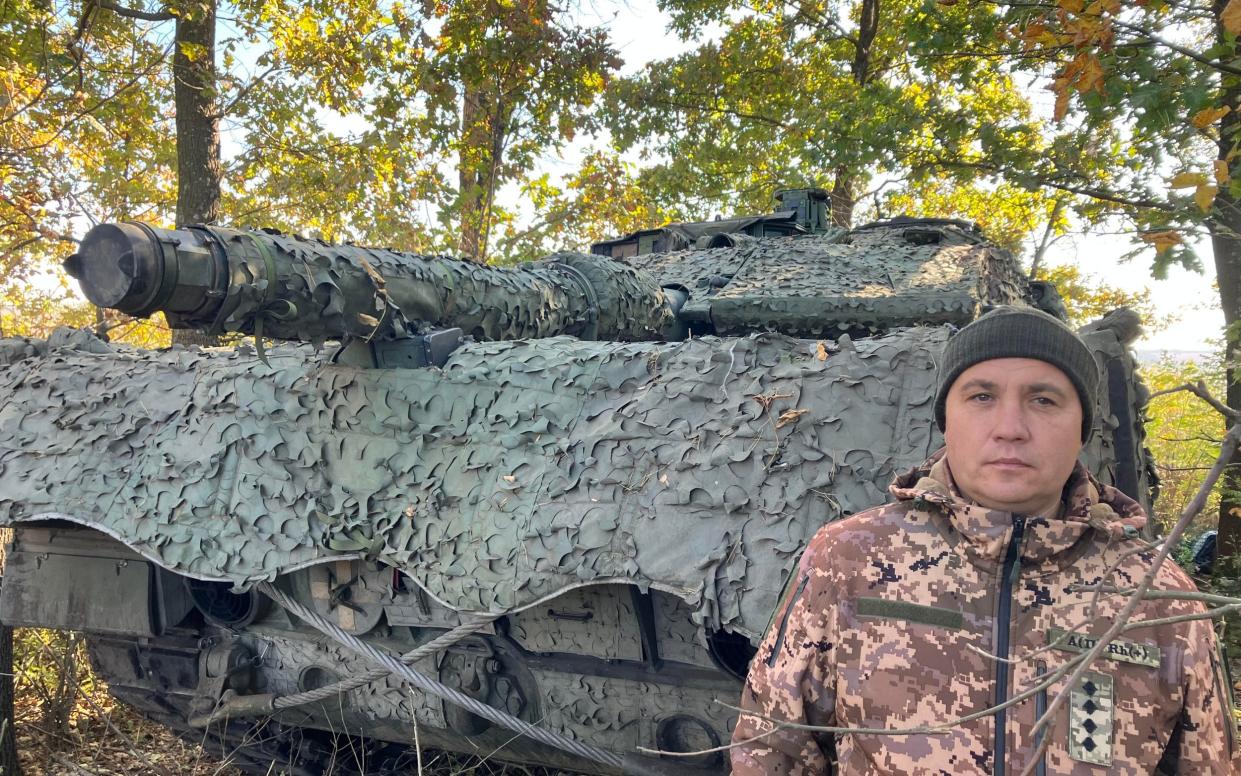Leopard’s purr is giving Ukraine’s tank troops an element of surprise

In the best traditions of the German automotive industry, it is precision-engineered to outclass the competition. Yet at 62 tons and 32ft long, the Leopard tank perhaps lacks the understated grace of an Audi or BMW.
Not so, according to the soldiers of Ukraine’s 21st Separate Mechanised Infantry Brigade, who used one on a night-time ambush near Kupiansk in Kharkiv Oblast last month.
In their noisy, rattly old-Soviet-era tanks, the enemy would have heard them coming from quite literally a mile away. But with the Leopard’s engine not much louder than a diesel van, they were able to creep up almost unnoticed.
“We were able to get about 200 metres from the Russian lines before we attacked,” said Commander Vitali, of the Brigade’s Third Tank Squad, who has been using the Leopard since the summer.
“You couldn’t do that with our older tanks, because you can hear them from two or three kilometres away – they make a lot of noise.”
‘Generally a much better tank’
The Leopard’s gentle purr is just one of many advantages of the tank, 70 of which have been donated by Nato to Ukraine for use in its ongoing counter-offensive. Britain has also supplied 14 Challenger tanks, but the Leopard is in use in greater quantities as Ukraine’s European allies have far more to spare.
Comdr Vitali and his comrades received their Leopards after attending a Nato training course in Europe, where a programme that would normally take 18 months was condensed into just nine weeks.
“I have driven tanks before, but my comrades haven’t – I think the tutors were quite impressed that we mastered how to use it in that time,” he said.
The Leopard has a top speed of around 42mph and comes with a 120mm gun, capable of punching through two feet of steel armour at a mile and a half. While the models supplied to Ukraine date back the 1990s, it is considered more than a match for the Soviet-built tanks that make up the bulk of the Russian arsenal, with a more accurate gun.
“It’s generally a much better tank – easier to drive and handle, and much better protected inside,” Comdr Vitali added. “We haven’t been hit by anything yet, but if we do, we stand a much better chance of surviving.”
Still, the Leopard’s presence in Ukraine has not been quite the showpiece gesture of support that the West intended it to be.
First, Germany was reluctant to allow them to be used at all, for fear it would heighten tensions with Moscow, and only changed its mind after pressure from Ukraine’s other backers.
Hopes that they would be an instant game-changer were also dashed during the counter-offensive’s opening weeks, when several Leopards hit landmines in the so-called “Surovikin Line”, the 80-mile network of Russian defences south of Zaporizhzhia.
There have also been questions over their reliability: some have spent years sitting in storage in Europe, and have developed technical faults after time in combat.
However, their fundamental toughness has been proved. Thanks to their enhanced armour, crews whose Leopards have been hit by landmines or Russian drones have generally also survived.
“Given the choice, I would always prefer to use a Leopard now rather than the older tanks we had before,” said Comdr Vitali.
Military analysts believe the Leopard has not yet had the chance to fully show its claws on the battlefield. It will come into its own, they predict, if and when Ukraine’s forces breach the Surovikin Line and push into the open ground beyond, which is much more suited to tank warfare.
Combat, though, is also about the art of making do, and many Ukrainian units continue to fight in tanks dating back to the Brezhnev era or before. Commander Oleksandr, with Ukraine’s 93rd Brigade near Bakhmut, uses a Soviet-era T64.
It might seem like a Trabant compared to Comdr Vitali’s Porsche. But it has had updates over the years, is simpler to use – and, crucially, is the tank he is used to fighting in.
“The Russians use these older tanks too, so we’re not at a disadvantage,” he said. “And anyway, a tank is just a machine. What’s important is your skill in using it, not how modern it is.”

